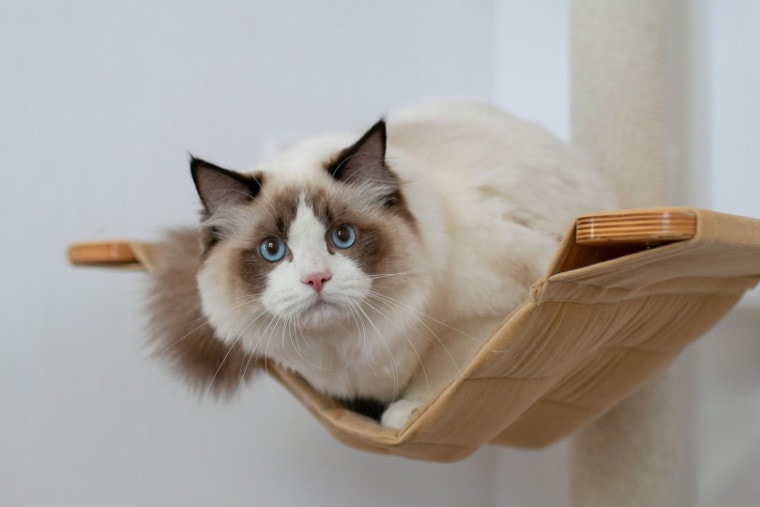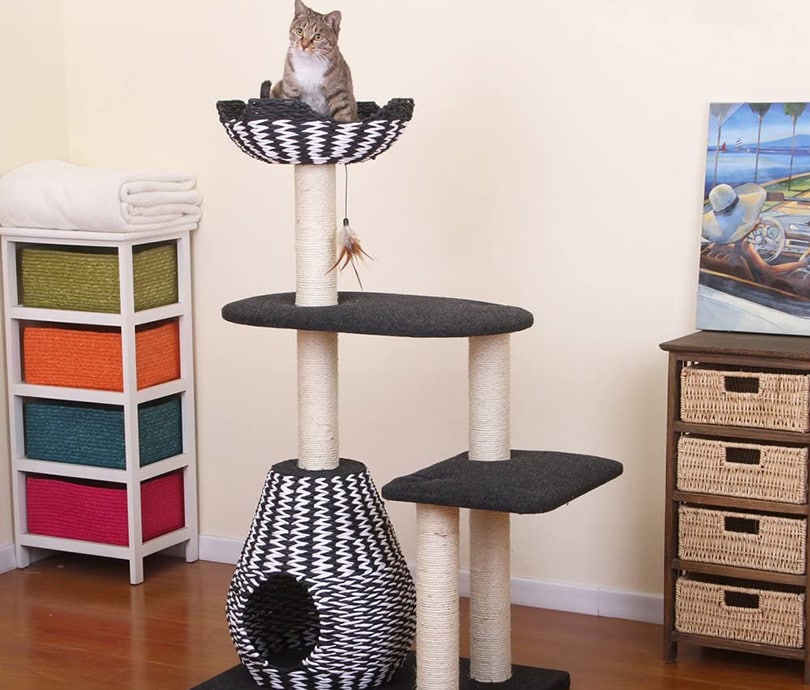
Cats don’t require as much space as you might think. The average cat needs around 18 square feet of space, but bear in mind, these are minimal requirements. While you might assume that your pet cat should have as much space to roam as possible, cats aren’t concerned about space as much as they are about layout. Cats like to climb on things and hide in small places. Without a space to hide, they become stressed. Large, wide-open spaces also cause pet cats to become stressed about their environment.
In this article, we will discuss a cat’s space requirements as well as some very important points to consider when providing your cat with a daily living space.
Determining Space Requirements
There are very few regulations for animal space requirements, and none that apply to house cats are known to exist. However, there are some general guidelines and suggestions based on common sense.
Cats Need as Much Living Space as You Can Provide
Cats will take as much space as you can give them, so if you live in a 400-square-foot studio apartment, your cat is most likely going to utilize all 400 feet at some point in time. Likewise, if you’re in a 2,000-square-foot home.
Plenty of resources on the internet will tell you that a cat’s primary enclosure should provide sufficient space to allow each cat to turn about freely, stand, sit, and lie in a comfortable, normal position, and walk in a normal manner. Additionally, cats should also be provided with a vertical space of a minimum of 3 feet for cats under 8.8 pounds and a minimum of 4 feet for cats over 8.8 pounds.
Considering these numbers, an average cat requires a minimum of 18 square feet of living space. These are the bare minimum requirements, based on animals in a shelter, rescue, and (bad) breeding conditions. While even the smallest apartments have rooms with this much space, cats will need a larger space to thrive. You should not expect to keep a cat in an area limited to 18 square feet.
Any animal should have enough space to display natural behaviors, and we know that cats love scratching, stretching, climbing, and jumping. Likewise, they enjoy having one or more small hiding spots to call their own, so make sure you provide them as well.

Socialization and Layout
Obviously, if you have two cats, you’ll require at least twice the amount of established minimum space. Proper socialization between the cats is a must, so they need enough space to feel safe and comfortable. Freedom from fear and distress are very important factors to consider in animal welfare. Cats are territorial creatures that exhibit a behavior called called “zoning.” Large, open spaces are uncomfortable for cats, so it’s important to layout your room with appropriate hiding spots. Cats like to hide and have a territory to call their own.
Are Cats Happy in Small Apartments?
Cats make fantastic apartment pets. While some are more energetic than others, their energy tends to be exhibited in short bursts in the form of play. They are content as long as they have enough space to play and places to jump and hide.
Cats love apartment living because they have lots of crevices to hide in. Tops of cupboards, behind furniture, and inside closets are favorite hiding spots.
If you’re keeping a pet cat in a small apartment, ensure that your cat has access to all areas, and make sure to plan out your space carefully if you wish to have multiple cats. It’s cruel and inhumane to keep a cat locked up in a single 8′ x 10′ bedroom. If you don’t have space for a cat, consider waiting until you do.

Does My Cat Need His Own Room?
You don’t have to provide your cat with his own room, but it is beneficial to create a private space for him. There are a few reasons why.

Do Cats Need Outside Space to Be Happy?
If you’re keeping an indoor cat, they will most likely be content remaining that way. Many rescue organizations believe that all cats should be kept indoors, as there are risks to letting them roam outside. However, if you are adopting a cat that is used to being outdoors, they may never be happy as a solely indoor cat.
Being outside provides much-needed exercise for cats. They can run, jump, climb, and chase prey. If they are feeling lazy, there is nothing cats love more than to nap and sunbathe.
How Do I Know If My Cat Is Happy With His Space?
You’ll have to learn to read your cat’s body language to determine whether they are content. There are several indicators of stress, including:
How to Create a Cat-friendly Space
If you live in a small house or an apartment, there are a few things you can do to make your cat more comfortable and improve their overall quality of life.
Final Thoughts
Cats don’t need a ton of space to be happy, and many cats can thrive in small spaces, but they do need more than the minimum 18 square feet. Understanding their needs means that you can tailor their surroundings accordingly to make them as comfortable as possible.
FeaturedImage Credit: Konstantin39, Shutterstock






